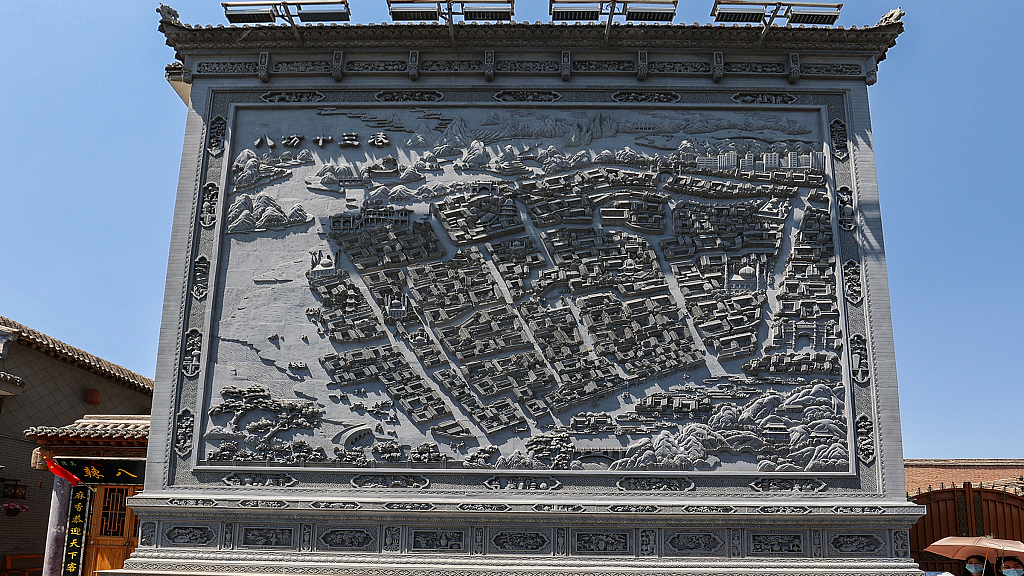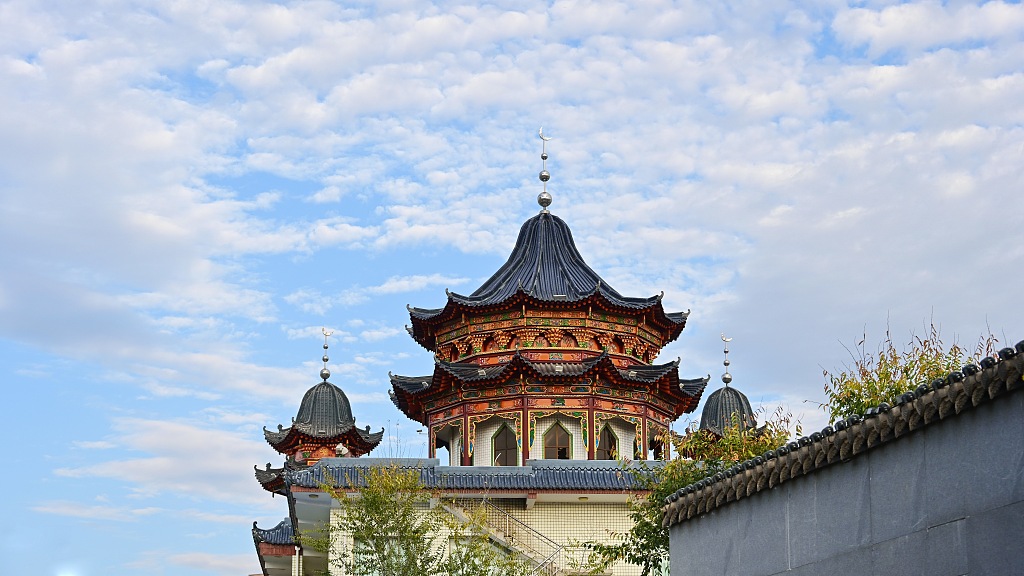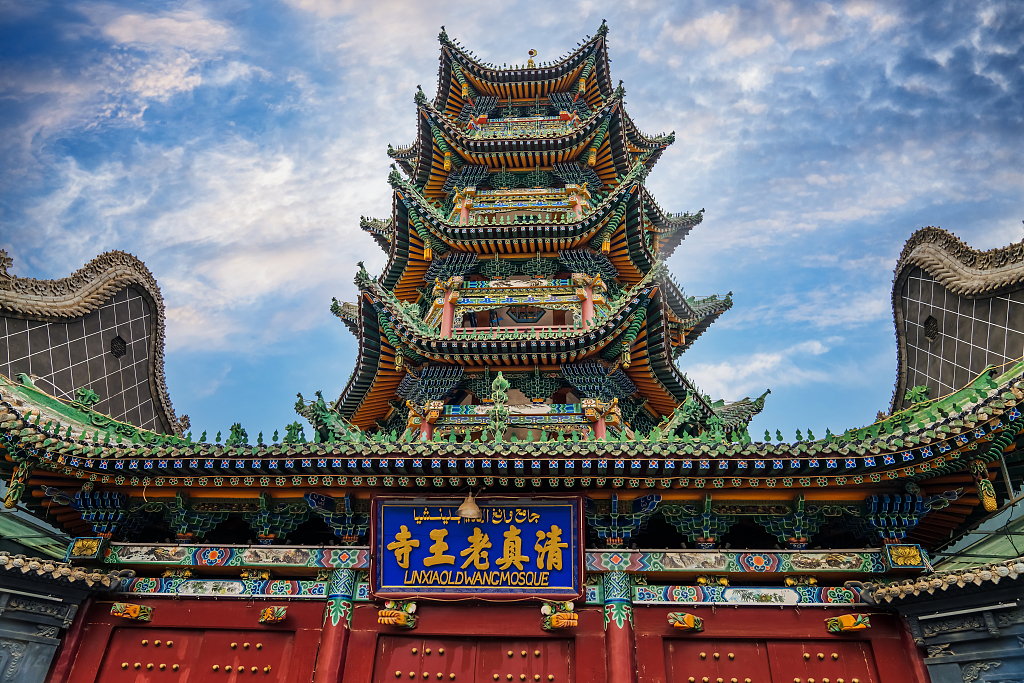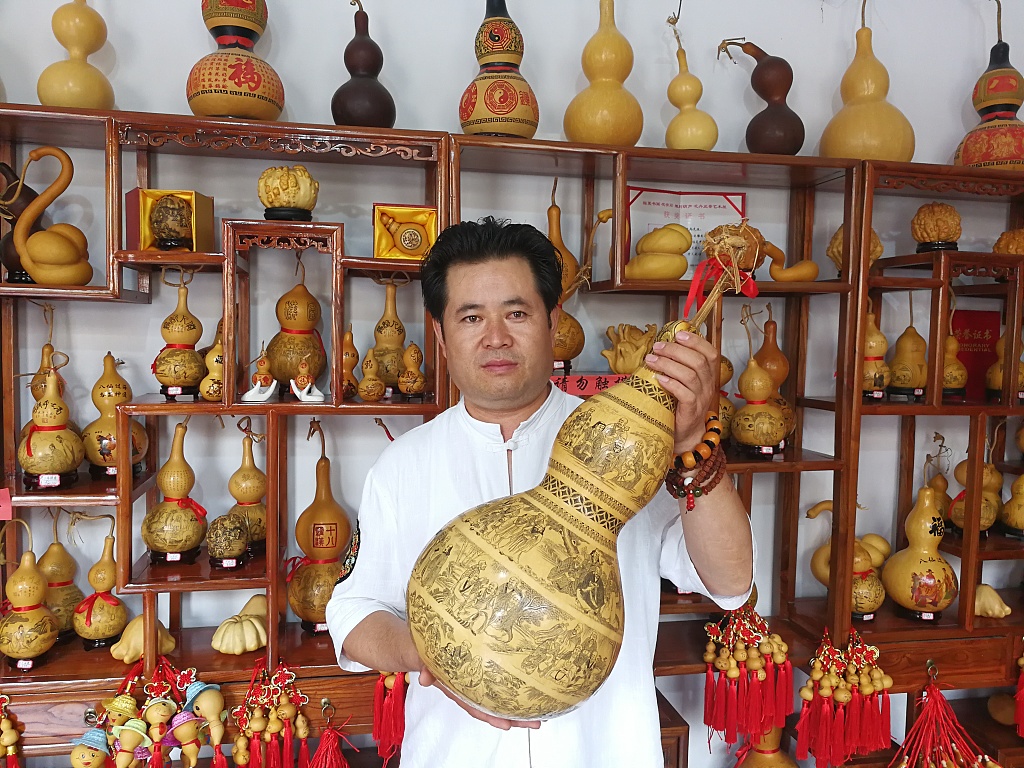
A brick carving depicts the streets distribution of Bafang Shisanxiang, Linxia, northwest China's Gansu. /CFP
A brick carving depicts the streets distribution of Bafang Shisanxiang, Linxia, northwest China's Gansu. /CFP
Linxia, formerly known as Hezhou, is located upstream of the Yellow River and is an important town on the southern route of the ancient Silk Road.
"Hezhou Bafang" is a general term historically used for the Hui ethnic enclave in the southern outskirts of Linxia, northwest China's Gansu Province. During the Tang Dynasty (618-907), merchants and religious figures from countries such as the Abbasid Caliphate (present-day Saudi Arabia) and Persia traveled long distances to engage in trade and missionary activities in the Hezhou area, and some of them stayed and never left.
The population of the Hui ethnic enclave grew, and gradually people started building mosques and establishing commercial quarters, forming a Muslim residential area known as Bafang Shisanxiang.
Today, Bafang Shisanxiang has expanded to an area of 1.2 square kilometers and is home to more than 14,000 people. Within the 49 streets and alleys, 41 courtyard houses and 109 residences are relatively well-preserved.

The Donggong Residence combines Western and Chinese traditions in Linxia, northwest China's Gansu. /CFP
The Donggong Residence combines Western and Chinese traditions in Linxia, northwest China's Gansu. /CFP
The Donggong Residence, a nationally-protected cultural heritage site located in the Bafang Shisanxiang area, embodies history. Its classic architectural art takes the form of the Chinese character "Tian." It is a courtyard-style complex that combines Western and Chinese traditions.
Built in 1938, the Donggong Residence is known for its brick carvings, with a total of 189 large and small brick carvings. The essence of "meaningful patterns and auspicious meanings" in Lanzhou brick carvings is vividly displayed here.

The Laowang Mosque in Bafang Shisanxiang follows the traditional Chinese palace style with a four-story wooden tower and six flying eaves, exquisitely constructed. /CFP
The Laowang Mosque in Bafang Shisanxiang follows the traditional Chinese palace style with a four-story wooden tower and six flying eaves, exquisitely constructed. /CFP
In addition to the Donggong Residence, the Laowang Mosque is also a must-visit scenic spot in Bafang Shisanxiang. The main hall of the Laowang Mosque follows the traditional Chinese palace style with a four-story wooden tower and six flying eaves, exquisitely constructed. The interior of its hall is adorned with carved beams and painted rafters.

Gourd carving master Bai Zhengbing shows his work in Linxia, northwest China's Gansu. /CFP
Gourd carving master Bai Zhengbing shows his work in Linxia, northwest China's Gansu. /CFP
In addition to these attractions, art and crafts in Linxia are also a great way to experience folk culture. Over the long course of development, Linxia has accumulated over a hundred unique intangible cultural heritage projects. Among them, gourd carving is particularly distinctive.
Linxia gourd carving is done with a special white steel needle, using the needle as a pen for carving. It combines calligraphy, painting, and seal engraving, featuring exquisite composition, elegant taste, and high artistic and collectible value. It has been included in the intangible cultural heritage list of Gansu Province. Among all the gourd carving artists in the country, more than 80 percent of them are from Linxia.